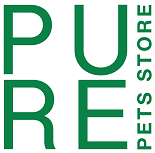Picture this: you’re playing fetch with your furry best friend in the park, basking in the joyous bond you share. But suddenly, tragedy strikes – your pet falls ill, requiring expensive veterinary treatment. This is where the importance of pet insurance shines through. In this article, we will explore the crucial reasons why having pet insurance is a game-changer for both your beloved companion and your peace of mind. From unexpected accidents to chronic health conditions, knowing the ins and outs of pet insurance will empower you to provide the best care possible for your fur baby. So, let’s dive into the world of pet insurance and explore what you need to know to protect your four-legged friend’s well-being.
Table of Contents
ToggleThe Basics of Pet Insurance
What is pet insurance?
Pet insurance is a type of coverage that helps protect you financially in case your pet needs medical care. Just like health insurance for humans, pet insurance provides coverage for a range of expenses related to your furry friend’s health. This can include accidents, illnesses, preventive care, and even some medications and surgeries.
How does pet insurance work?
Pet insurance works by paying a monthly or annual premium to the insurance provider. In return, the insurance company agrees to cover a portion of your pet’s medical expenses, depending on the terms and conditions of the policy. When your pet needs veterinary care, you pay for the services upfront and then submit a claim to the insurance company for reimbursement.
What does pet insurance cover?
Pet insurance typically covers unexpected expenses related to accidents and illnesses. This can include diagnostics, treatments, surgeries, medications, and hospitalization. Some policies may also offer coverage for preventive care, such as vaccinations, annual exams, and dental cleanings. It’s important to carefully review each policy’s coverage details to understand what is included and what is not.
What does pet insurance not cover?
While pet insurance can provide valuable financial protection, it’s important to understand that not all expenses will be covered. Most pet insurance policies have certain exclusions, such as pre-existing conditions, breed-specific conditions, and cosmetic procedures. Some policies may also have waiting periods before certain conditions are covered. Additionally, routine wellness care, such as vaccinations and flea prevention, may not be included in all policies.
Benefits of Having Pet Insurance
Financial protection for unexpected expenses
One of the primary benefits of pet insurance is the financial protection it offers. Veterinary bills can quickly add up, especially in the case of emergencies or chronic illnesses. Having pet insurance can help alleviate some of the financial burden and ensure that you can provide the necessary care for your beloved pet without worrying about the cost.
Access to quality healthcare
With pet insurance, you have the peace of mind knowing that you can afford to seek quality healthcare for your pet. You can choose the best veterinarians and specialists without having to compromise on the level of care your pet receives. This means that you can make decisions based on what is best for your pet’s health, rather than what you can afford in the moment.
Peace of mind in emergencies
Emergencies can happen at any time, and they often come with significant emotional stress. Knowing that you have pet insurance can provide peace of mind in these situations. You can focus on getting your pet the immediate care they need without worrying about the financial implications. This peace of mind allows you to make the best decisions for your pet’s health and well-being.
Coverage of preventive care
While the focus of pet insurance is often on accidents and illnesses, many policies also offer coverage for preventive care. Regular check-ups, vaccinations, and other preventive measures are vital to keeping your pet healthy and preventing future health issues. By having pet insurance, you can ensure that your pet’s preventive care needs are met, keeping them on track for a long and healthy life.
Types of Pet Insurance
Accident-only coverage
Accident-only coverage is the most basic type of pet insurance. It provides coverage only for accidents, such as injuries from car accidents, falls, or poisoning. This type of coverage does not include illnesses or preventive care.
Illness-only coverage
Illness-only coverage focuses on providing coverage for illnesses and diseases, excluding accidents. This can include conditions like cancer, infections, allergies, and chronic diseases. Routine preventive care is generally not covered under this type of policy.
Accident and illness coverage
Accident and illness coverage is the most comprehensive type of pet insurance. It covers both accidents and illnesses, including diagnostics, treatments, surgeries, hospitalization, and medications. Depending on the policy, this coverage may or may not include preventive care.
Wellness coverage
Wellness coverage, also known as routine care coverage, is an optional add-on to your pet insurance policy. It covers routine preventive care expenses, such as vaccinations, annual exams, dental cleanings, and flea prevention. This type of coverage can be a valuable addition for pet owners who want to ensure that their pet’s routine healthcare needs are covered.
Exotic pet coverage
While most pet insurance policies are designed for cats and dogs, there are also options available for exotic pets. Exotic pet insurance provides coverage for unique pets like birds, reptiles, small mammals, and even horses. This type of coverage can help you protect the health and well-being of your unconventional pet.
Factors to Consider When Choosing Pet Insurance
Cost of premiums
The cost of premiums is an important factor to consider when choosing pet insurance. Premiums can vary based on factors such as your pet’s age, breed, location, and the level of coverage you select. It’s important to compare quotes from different insurance providers to find a policy that offers the coverage you need at a price that fits your budget.
Coverage restrictions and limitations
Each pet insurance policy has its own set of coverage restrictions and limitations. These can include waiting periods before coverage starts, age limits for enrollment, breed-specific exclusions, and restrictions on certain conditions or treatments. Carefully review the terms and conditions of each policy to ensure that it aligns with your pet’s specific needs.
Claim process and reimbursement
Understanding the claim process and reimbursement procedure is crucial when choosing pet insurance. Some insurance providers offer a quick and hassle-free claim process, while others may require extensive documentation and longer processing times. Consider the ease of filing a claim and the speed of reimbursement when selecting a pet insurance provider.
Exclusions and waiting periods
Exclusions and waiting periods are common in pet insurance policies. Exclusions refer to conditions or treatments that are not covered by the policy, while waiting periods dictate how long you must wait before certain conditions are eligible for coverage. It’s important to understand these exclusions and waiting periods to avoid any surprises when you need to make a claim.
Customer reviews and reputation
When choosing a pet insurance provider, it’s essential to consider customer reviews and the company’s reputation. Read reviews from current and past customers to get an idea of their experience with the company’s claims process, customer service, and overall satisfaction. Choosing a reputable and reliable insurance provider can make a significant difference in your pet’s care.
Understanding Policy Terms and Conditions
Deductibles
A deductible is the amount of money you must pay out of pocket before the insurance coverage kicks in. This can be a fixed amount or a percentage of the total bill, depending on the policy. A higher deductible typically results in lower monthly premiums, while a lower deductible means higher premiums. Consider your budget and risk tolerance when choosing a deductible amount.
Co-pays and co-insurance
Co-pays and co-insurance are additional costs that may be required even after you’ve paid the deductible. A co-pay is a fixed amount you must pay for each visit or treatment, while co-insurance is a percentage of the total bill. These costs can vary depending on the policy and should be taken into account when comparing different pet insurance options.
Maximum payout limits
Most pet insurance policies have a maximum payout limit, which is the maximum amount they will reimburse in a policy year or for a specific condition. Be sure to understand these limits and consider how they align with your pet’s potential healthcare needs. Some policies may offer unlimited coverage, while others may have caps on payouts.
Pre-existing conditions
Pre-existing conditions are typically not covered by pet insurance. These are conditions that your pet had before you purchased the insurance policy. It’s important to disclose any pre-existing conditions during the application process as providing false information can potentially invalidate your coverage. Be aware that even if a condition is covered, there may be waiting periods before it becomes eligible for reimbursement.
Renewability and cancellation
When selecting a pet insurance policy, consider the renewability and cancellation terms. Some policies provide lifetime coverage that can be renewed annually, while others may have age limits or restrictions on renewability. It’s also important to understand the cancellation policy, including any penalties or fees that may apply if you decide to cancel the policy.
Tips for Finding the Right Pet Insurance Provider
Determine your pet’s needs
Every pet is unique, and their healthcare needs can vary. Before choosing a pet insurance provider, consider your pet’s age, breed, and any pre-existing conditions. Think about the level of coverage you need, including accidents, illnesses, and preventive care. By understanding your pet’s specific needs, you can select a policy that aligns with their healthcare requirements.
Compare different providers
It’s important to compare different pet insurance providers to find the best coverage and pricing for your pet. Look at factors such as coverage options, premiums, deductibles, and reimbursement rates. Pay attention to any exclusions or limitations that may impact your pet’s specific needs. Compare quotes from multiple providers to make an informed decision.
Read the fine print
Before committing to a pet insurance policy, read the fine print. Understand the terms and conditions, including exclusions, waiting periods, and coverage limits. Pay attention to any additional fees, such as deductibles, co-pays, or administrative charges. Being aware of these details will help you make an informed decision and avoid any surprises when it comes time to use the insurance.
Consider customer service and support
Good customer service and support are essential when it comes to pet insurance. Look for providers with a reputation for excellent customer service, prompt response times, and helpful claims assistance. Read reviews and seek recommendations from other pet owners to ensure that you choose a provider who will be there for you and your furry friend when you need them the most.
Seek recommendations
Ask for recommendations from friends, family, and your veterinarian. Other pet owners can provide valuable insights into their experiences with different pet insurance providers. Your veterinarian, who is familiar with your pet’s health history, may also be able to recommend reputable insurance companies that have a strong track record in providing quality coverage.
Common Questions About Pet Insurance
Is pet insurance worth it?
The value of pet insurance depends on your individual circumstances and your pet’s healthcare needs. If you have a young and healthy pet, you may not need as much coverage. However, if you have a breed prone to certain illnesses or if your pet has pre-existing conditions, pet insurance can offer significant financial protection. Ultimately, it’s important to weigh the potential costs against the financial security and peace of mind that pet insurance provides.
When is the best time to get pet insurance?
The best time to get pet insurance is when your pet is young and healthy. Getting coverage early ensures that any future conditions or illnesses will be considered pre-existing. By enrolling your pet in insurance before they develop any health issues, you can maximize the coverage available to you.
What if my pet already has a pre-existing condition?
Pet insurance typically does not cover pre-existing conditions. If your pet already has a health issue, it’s unlikely that insurance will provide coverage for that specific condition. However, some policies may still cover other accidents or illnesses that arise in the future. Be sure to disclose any pre-existing conditions when applying for insurance to avoid complications down the line.
Can I use any veterinarian with pet insurance?
Most pet insurance policies allow you to use any licensed veterinarian in the country. This gives you the flexibility to choose a veterinarian you trust and who provides the best care for your pet. However, it’s important to check the specific policy terms to ensure that there are no limitations or restrictions on the choice of veterinarian.
Can multiple pets be covered under one policy?
Yes, many pet insurance providers offer the option to cover multiple pets under one policy. This can be a convenient and cost-effective way to provide coverage for your furry family members. It’s important to consider the individual needs of each pet and ensure that the policy provides adequate coverage for all of them.
Key Considerations for Pet Owners Without Insurance
Budgeting for veterinary expenses
If you don’t have pet insurance, it’s crucial to budget for potential veterinary expenses. Set aside funds specifically for your pet’s healthcare needs. Regularly assess your pet’s health and monitor for any signs of illness or injury, taking into account the potential costs associated with veterinary care.
Seeking financial assistance
If you’re facing financial difficulties and unable to afford pet insurance, there are often resources available to provide financial assistance for veterinary care. Local animal welfare organizations, nonprofit groups, and veterinary schools may offer assistance programs or low-cost clinics. Reach out to these organizations to explore your options.
Exploring alternative healthcare options
In addition to traditional veterinary care, there may be alternative healthcare options available for your pet. Some pet owners choose holistic treatments, acupuncture, or chiropractic care as alternative or complementary approaches to their pet’s health. Research these options and consult with professionals in the field to determine if they are suitable for your pet’s specific needs.
Considering self-insurance
Another option for pet owners without insurance is self-insurance. This involves setting aside funds in a dedicated savings account that is specifically earmarked for your pet’s healthcare needs. By consistently saving, you can create a financial safety net to cover unexpected medical expenses.
The Future of Pet Insurance
Advancements in veterinary care
As veterinary medicine continues to advance, pet insurance is likely to evolve as well. New diagnostic tools, treatment options, and surgical techniques may become more accessible and affordable with the help of insurance coverage. This means that pet owners can provide their pets with the best possible medical care without worrying about the cost.
Growing demand and coverage options
The demand for pet insurance is growing as more pet owners recognize the value of this coverage. As a result, insurance companies are expanding their coverage options to meet the diverse needs of pet owners. This includes coverage for exotic pets, more comprehensive wellness plans, and customizable coverage options to suit different budgets and preferences.
Potential improvements in affordability
While pet insurance can be an investment, there is potential for improvements in affordability. As the industry continues to grow and competition increases, insurance providers may offer more competitive pricing and discounts. This can make pet insurance more accessible to a wider range of pet owners, ensuring that more pets can receive the care they need.
Integration with technology and telemedicine
The integration of technology and telemedicine is likely to have a significant impact on the future of pet insurance. The use of telemedicine, where veterinarians can provide remote consultations and advice, can offer convenient and cost-effective solutions for pet owners. Additionally, advancements in wearable devices and health monitoring technology can provide real-time data and early detection of health issues, leading to better outcomes for pets and potentially reduced insurance costs.
Conclusion
Pet insurance plays a crucial role in protecting the health and well-being of our beloved pets. It offers financial security, access to quality healthcare, peace of mind in emergencies, and coverage of preventive care. By understanding the basics of pet insurance, considering different types of coverage, and evaluating key factors when choosing a provider, you can make an informed decision for your pet’s healthcare needs. Whether you choose pet insurance or explore alternative options, ensuring that your pet has access to the care they need is an essential part of being a responsible pet owner.








